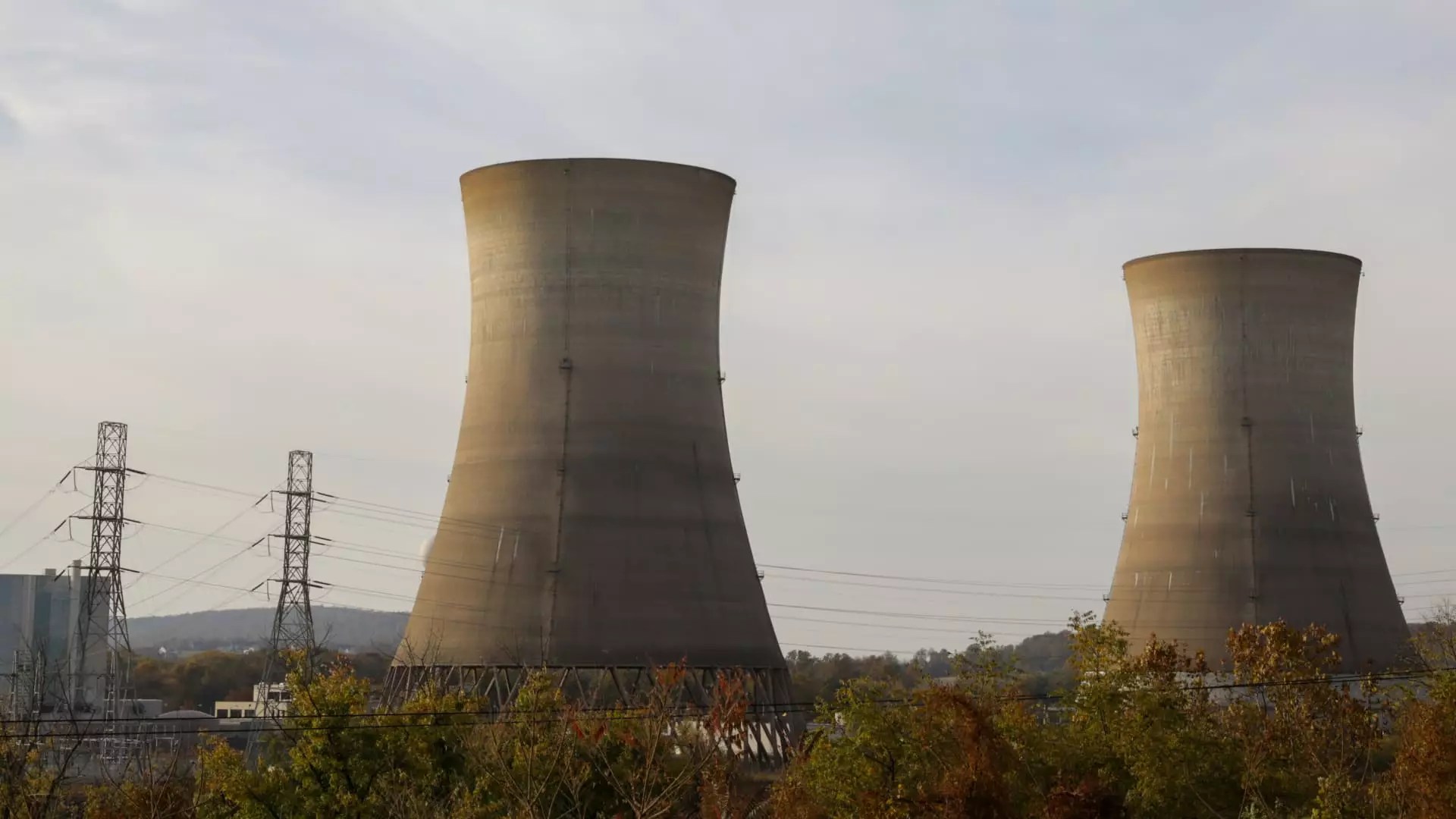In a world teetering on the brink of an energy crisis every few years, one often overlooked resource is stepping back into the spotlight: uranium. While fossil fuels have dominated energy discussions for decades, a “real shift” is happening, according to industry insiders like John Ciampaglia, the CEO of Sprott Asset Management. The increased appetite for energy, especially from burgeoning technologies like artificial intelligence, is driving renewed interest in nuclear energy as a viable solution to our power woes. This isn’t merely a fad; it’s a statement that we should take seriously for our energy future.
Uranium is being hailed for its reliability, particularly as nations around the globe face crippling energy demands exacerbated by geopolitical tensions. For instance, last year’s gas supply crises in Europe have shown just how precarious our energy security can be. Ciampaglia points out that, unlike fossil fuels, uranium offers a zero-greenhouse-gas solution, a crucial aspect as citizen concern grows over climate change. With the world caught in the dense fog of climate urgency, nuclear energy may not just be an alternative; it may become essential.
Changing Attitudes: From Fear to Acceptance
The stigma surrounding nuclear energy is beginning to fade. Many countries are shifting their stance on nuclear technology—except Germany continues to cling to its anti-nuclear sentiments. Ciampaglia observes a seismic shift toward nuclear power, emphasizing how it aligns with long-term sustainability goals. His bullish stance on uranium investments isn’t merely an opportunistic play; it’s a real acknowledgment that nuclear’s “energy density” makes it one of the most practical options available.
Germany’s unyielding rejection of nuclear might signify a stubborn streak that could backfire; ignoring the advantages of nuclear power in favor of solar or wind alternatives may inhibit energy security long term. Meanwhile, nations like China, the U.S., and many in Europe are catching up quickly, embracing nuclear energy in their pursuit of sustainable, carbon-neutral futures. This shift indicates that global consumption patterns are breaking free from the traditional fossil-fuel mold, and it seems their impact might ripple further than we currently comprehend.
Investment Strategies in Distress
While investment opportunities in uranium have beckoned enthusiastic backers, they are not without their challenges. The slow pace of nuclear plant construction can be a stumbling block for investors seeking quick returns. Jan van Eck, CEO of VanEck, highlights this frustration when he states, “Investors are not patient, as we know.” The long lead time for new nuclear developments poses a risk, especially when energy demands are rising sharply.
Investors must separate the wheat from the chaff when considering uranium-based options. Funds like the Sprott Physical Uranium Trust have made significant leaps recently; however, lurking risks could undermine such rapid progress. While companies like Oklo and NuScale Power promise advancements, the specter of construction delays and regulatory hurdles looms large. A delicate balance must be struck between seizing short-term gains and avoiding potential long-term pitfalls.
The Political Landscape and Its Influence
The political environment will play a significant role in shaping the future of uranium energy. The recent executive actions by the Trump administration to foster nuclear power development could install a newfound urgency in the sector. With Presidents and political players influencing energy policy, the fate of uranium does not rest solely on market dynamics but also on Capitol Hill’s prevailing sentiment toward nuclear energy.
The deregulation of nuclear plant construction might serve as a double-edged sword; while it can streamline operations and enhance immediate returns, it may also lead to the undermining of essential safety protocols. This instability raises pertinent questions: Are we willing to prioritize energy independence over stringent safety measures? Is the desire for quick energy solutions placing lives at risk? Such moral dilemmas need to be scrutinized as we forge ahead with nuclear initiatives.
Nuclear Power: The Future or a Flash in the Pan?
The uranium trade, glimmering with promise, could transform the energy sector over the next several years, fueled by technological advancements and changing attitudes. However, anyone considering jumping into the market must act with caution. A comprehensive understanding of both the potential and pitfalls of nuclear energy is crucial. The ideology of immediate solar or wind solutions may be appealing, but overlooking nuclear as a sustainable alternative runs the risk of trapping us in our energy crisis.
The stakes involved in supporting uranium reveal much about our collective commitment to energy security and our evolving relationship with the environmental challenges we face. As a center-right liberal, one can’t help but advocate for pragmatic solutions that embrace both economic growth and environmental responsibility. The point is no longer whether we should transition to nuclear energy but when we will acknowledge that it might be our best path forward.


Leave a Reply